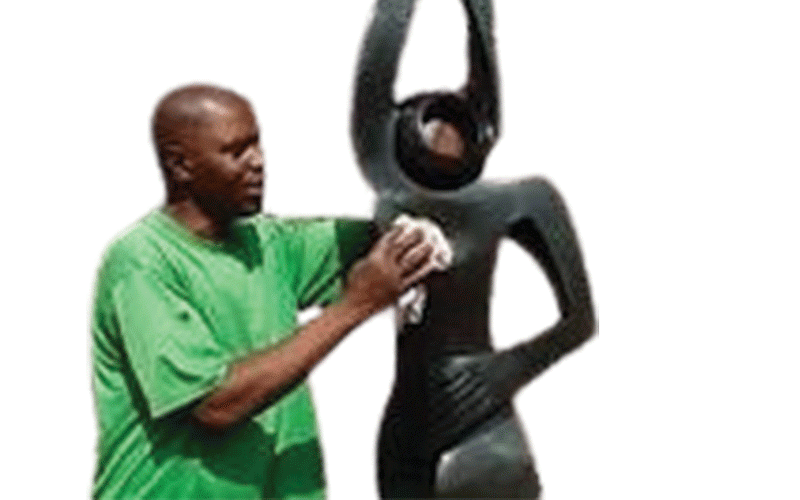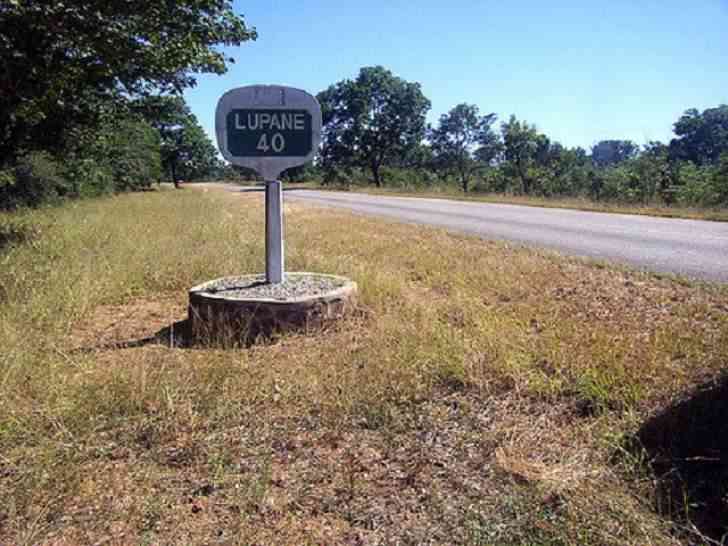
FARAI Nyakanyanza, secretary for the Chitungwiza Arts Centre Visual, has been charmed by the stork bird’s ability to migrate to places where they can survive without much struggle for food and water.
The stork bird is identified through its white colour, long crimson or pink legs, long neck and a long mandible which the seasonal creature uses to peck ticks on animals and other insects.
The other striking feature is its ability to balance on one leg while it assumes a weird posture to stretch its muscles and before taking a sudden take off.
Being seasonal, stork birds are usually symbolic of the arrival of rains or the rainy season.
Through various stone types such as spring stone, opal, cobalt and dolomite found in geographically-spaced areas in Zimbabwe, Nyakanyanza explores the stork bird character beyond what is already known to us, like the long stretching kicks, winding flexible neck and its pedigree.
His most conspicuous observation is its ability to reinvent an understanding of newness and development brought by migration.
“Migrating to new places should be equated to tourism, defining relevancy, peacefulness and human search for dignity and a sense of belonging. Through the character of the stork bird, one discovers new employment opportunities, assertive and tactical cultural exchanges, markets and in most cases attaining mental health or acquiring a new set of skills that change life in the long run,” Nyakanyanza said.
Nyakanyanza added that he had closely followed the habitat of the stork birds and noted their behaviour in human congested areas, movement along rivers, dry lands, grasslands and when they mingle with cattle and wildlife. His insight is closely similar to that of a Chinese film in which migrating elephants expose human weakness of destroying forests and complain about environmental degradation and crop destruction caused by the desperate herbivores. The Chinese film, in addition to unravelling lots of truths about how the birds mingle with humans, teaches storytellers on the tactfulness of handling the hard to tell. A crisis emerges when there is a need to be bold and succinct to stop an unfair practice or beg for lenience. Celebrated Sungura musician Nicholas Madzibaba Zacharia calls his dancing troupe the Stork Birds. The gifted dancers imitate the migrating feathered friends in so many ways and in the process have demystified the mental health challenges associated with Dyslexia through the Sarcasm Dance and the Stork Bird dances, respectively.
- AAT adds Vic Falls Spa in post-pandemic strategy
- Feature: Insects, solution to Africa’s malnutrition and food problems
- Zim writers win prestigious Windham-Campbell prizes
- Inside the DRC’s great ape trade
Keep Reading
“As you may observe from my garden here at the Chitungwiza Arts Centre, every figurine has a story behind it and I believe I still have plenty of stories to tell through Shona stone art. This year’s Culture Month theme resonates with my artworks. The preservation and teaching of local languages is of paramount importance.
“We go to places where people speak Ndebele, Karanga, Ndau, Chimanyika and so on to mine stones and the beauty that we come up with through the carved stones should be ploughed back through development in the areas we extract the stones. We also need to learn the languages of all these people we do business with to show our unity in diversity.
“True and accurate Shona stone art narratives can only be transmitted when people are allowed to express themselves intelligently in our local languages. Languages are learnt through acquisition and one way is to come up with frequently told stories about our places of origin,” Nyakanyanza said.
He believes ideas borrowed from migration can help people in furthering or sharpening their strength and knowledge in utilising their natural resources effectively.







